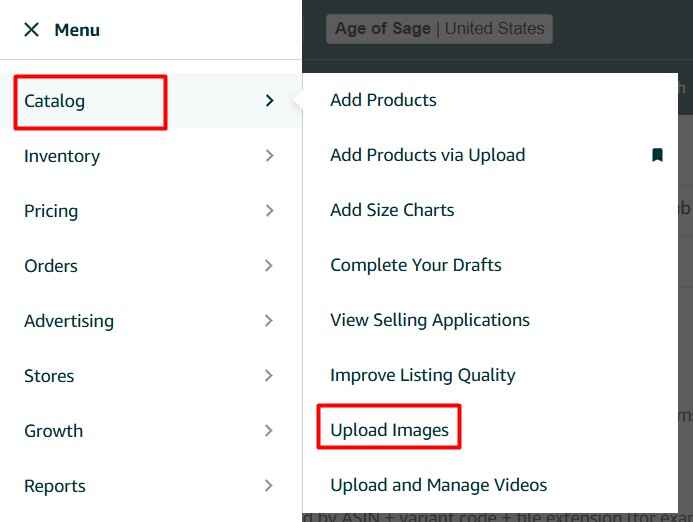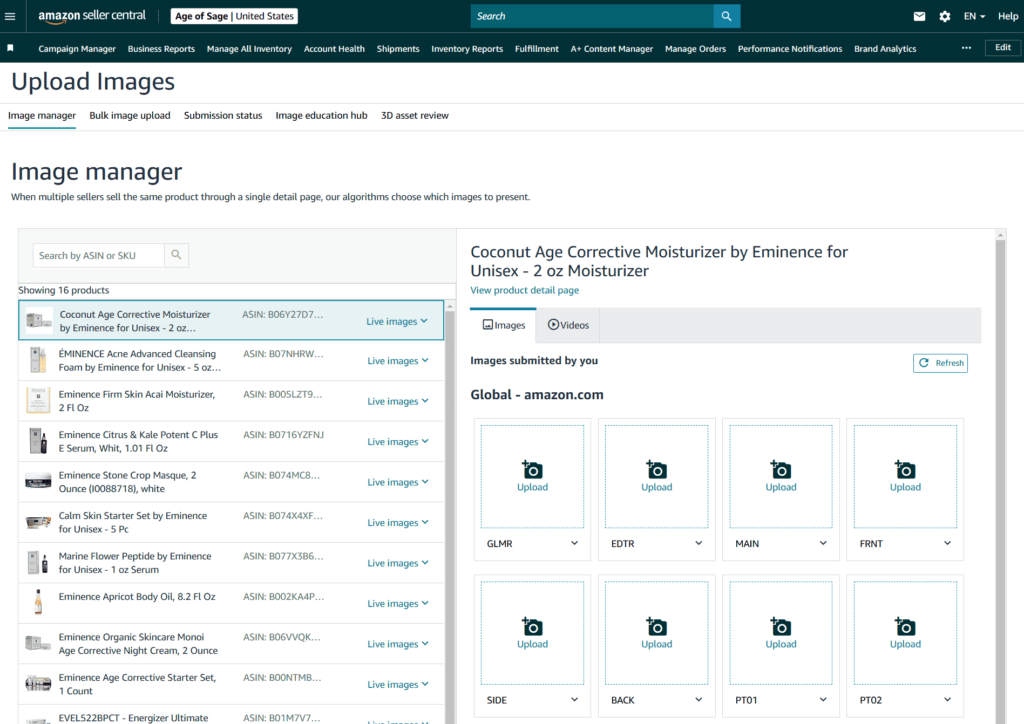View and delete your product images, country by country with the new Seller Central Image Manager update.

Managing product images across different countries can be a hassle for Amazon sellers.
Ensuring that visuals align with regional preferences and regulations often requires time-consuming adjustments and can lead to confusion if images don’t meet local standards.
Amazon’s latest Seller Central Image Manager update tackles this problem, offering new country-specific controls. Sellers can now easily fine-tune images to meet language requirements and regional compliance, simplifying image management across global markets.
Seller Central Image Manager Upgrade: What Value Does It Offer
Amazon’s recent upgrade to the Seller Central Image Manager streamlines the process of managing country-specific product images. Previously, sellers needed approval and documentation to display region-specific visuals. Before we get into the details of this update, let’s look at why localized product images matter to sellers.
Key Benefits of Country-Specific Images for Sellers
Images tailored to local languages help customers understand product features easily.
Localized visuals reflect regional preferences, making products more relatable and appealing.
Customized images allow sellers to meet country-specific advertising regulations.
Localized images build trust and set sellers apart from competitors who use generic visuals.
Uploading and Controlling Visuals In Seller Central Image Manager
Amazon’s Image Manager tool has recently been updated to streamline the management of localized images. The newest feature lets sellers view and delete country-specific images for individual marketplaces, helping brands keep their image libraries organized and targeted.
This follows an update from two months ago that allowed sellers to upload localized images in different marketplaces, providing shoppers with visuals tailored to their language and cultural preferences.
Using localized images is crucial for driving conversions, as it makes products more relatable and engaging to regional customers. For example, showing product text in the local language or culturally resonant visuals can create stronger connections and improve purchase decisions.
The Country-Specific Upload tool in Seller Central simplifies global expansion efforts, ensuring each market displays content that resonates with its audience.
How to Access The Image Manager Tool
You may click this link to go to the Image Manager tool immediately.
Alternatively, you may go to Catalog > Upload Images in your Seller Central account.
The Image Manager, Bulk Image Upload, Submission Status, Image Education Hub, and 3D Asset Review tools are in the Upload Images dashboard.
Maximizing The Value Of Country-Specific Product Images
Strategies To Implement
Sellers can maximize the benefits of country-specific listing images by following these strategies:
Localize Text on Images
To enhance your Amazon listings, consider adding localized text to country-specific images. This tactic helps tailor your product visuals to specific markets, increasing relevance and appeal.
For example, using images with localized keywords or phrases makes it easier for potential customers to connect with your product.
Adapt Visual Content for Cultural Preferences
Use imagery that resonates with the target audience, such as models, settings, or color schemes aligned with local tastes.
Robert AhlborgAs impactful as images are, they can also be interpreted differently by consumers depending on where they're from.
Highlight Region-Specific Features
Showcase product attributes that appeal specifically to the market, such as climate-relevant uses or locally popular features.
Ensure Compliance with Local Regulations
Include required certifications, warnings, or labels specific to the country to avoid legal issues.
- Test and Optimize
Monitor how localized images impact engagement and sales. Use A/B testing to determine which visuals perform best in specific markets.
Consistent Branding with Localization
Maintain consistent brand identity across regions while tailoring images to feel relevant and authentic to local audiences.
Monitor Competitors
Study competitors’ localized listings to identify trends and opportunities for improvement.
Challenges To Anticipate
When implementing strategies for country-specific listing images, sellers may encounter several challenges:
- Ignoring CTR
When creating localized images for Amazon listings, it’s essential to optimize for click-through rate (CTR), not just translation or local elements. Focus on adding clear keywords and appealing visuals, such as showcasing the product in use.
Testing different image variations, like adjusting text size or visual positioning, can significantly boost CTR. Balancing localization with strategic design ensures your image attracts clicks and drives sales.
Here’s a video showing how to leverage keywords in main images to boost CTR.
- Cultural Nuances
Misinterpreting cultural norms or preferences can lead to images that fail to resonate or even offend potential customers. With visual content localization, it’s important to adapt visuals like colors and emojis to suit cultural preferences.
For example, red symbolizes luck in China but caution in the West. A thumbs-up emoji can be seen as offensive in the Middle East. Understanding these cultural nuances helps ensure your content is both effective and respectful, avoiding misinterpretations and enhancing audience engagement.
- Regulatory Complexities
Localizing images requires navigating legal challenges like varying copyright laws, different advertising regulations, and strict privacy rules. Ensuring compliance is essential to avoid legal issues in each market.
Patricia Aufderheide and Peter JasziAll copyright law is national law; it applies to people and companies within that country.
- Language and Data Accuracy
Use professional translators and proofreaders to ensure accurate, culturally relevant text. Validate translations with local audiences to ensure resonance.
Minimize text on images to reduce errors and enhance readability. Cross-check listings for alignment between images and product details.
- Adapting to Marketplace Changes
To adapt to Amazon marketplace changes, regularly monitor Amazon updates, ensure listing images meet current guidelines, and A/B test variations to identify top performers.
Consider working with Amazon specialists to stay compliant and responsive to trends. Finally, use customer feedback to refine listings and stay competitive.
- Time Constraints
Creating, testing, and updating localized content takes time, potentially delaying listings or product launches.
United Language GroupLocalization can be a long, complicated process, where attention to details like imagery can have massive benefits to a company’s global success.
- Scaling Across Multiple Markets
Scaling across marketplaces requires using localized images that resonate with cultural preferences. Research cultural norms, use universal symbols, and incorporate local elements like landscapes and people to connect with diverse audiences.
A flexible framework and expert feedback ensure cultural accuracy and streamline future campaigns.
- Monitoring Performance
Leverage Amazon’s Brand Analytics, third-party tools, and your own data to measure engagement metrics like CTR, conversions, and sales.
Establish clear goals for each marketplace (e.g., specific CTR or sales targets) to compare the performance of localized images against. Regularly conduct A/B testing with different localized images to identify what resonates best with each market.
Partnering with professionals, like an Amazon agency, can help mitigate these challenges and optimize your localization strategy for success across multiple markets.








